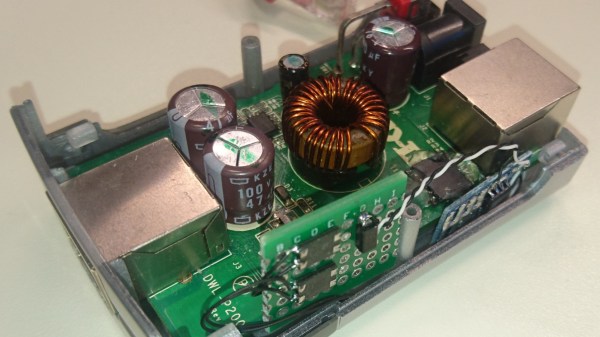Implementing PoE is made interesting by the fact that not every Ethernet device wants power; if you start dumping power onto any device that’s connected, you’re going to break things. The IEEE 802.3af standard states that the device which can source power should detect the presence of the device receiving power, before negotiating the power level. Only once this process is complete can the power sourcing device give its full supply. Of course, this requires the burden of smarts, meaning that there are many cheap devices available which simply send power regardless of what’s plugged in (passive PoE).
[Jason Gin] has taken an old, cheap passive PoE splitter and upgraded it to be 802.3af compatible (an active device). The splitter was designed to be paired with a passive injector and therefore did not work with Jason’s active 802.3at infrastructure.

The brain of the upgrade is a TI TPS2378 Powered Device controller, which does the power negotiation. It sits on one of two new boards, with a rudimentary heatsink provided by some solar cell tab wire. The second board comprises the power interface, and consists of dual Schottky bridges as well a 58-volt TVS diode to deal with any voltage spikes due to cable inductance. The Ethernet transformer shown in the diagram above was salvaged from a dead Macbook and, after some enamel scraping and fiddly soldering, it was fit for purpose. For a deeper dive on Ethernet transformers and their hacked capabilities, [Jenny List] wrote a piece specifically focusing on Raspberry Pi hardware.
[Jason]’s modifications were able to fit in the original box, and the device successfully integrated with his 802.3at setup. We love [Jason]’s work and have previously written about his eMMC adventures, repairing windows tablets and explaining the intricacies of SD card interfacing.











